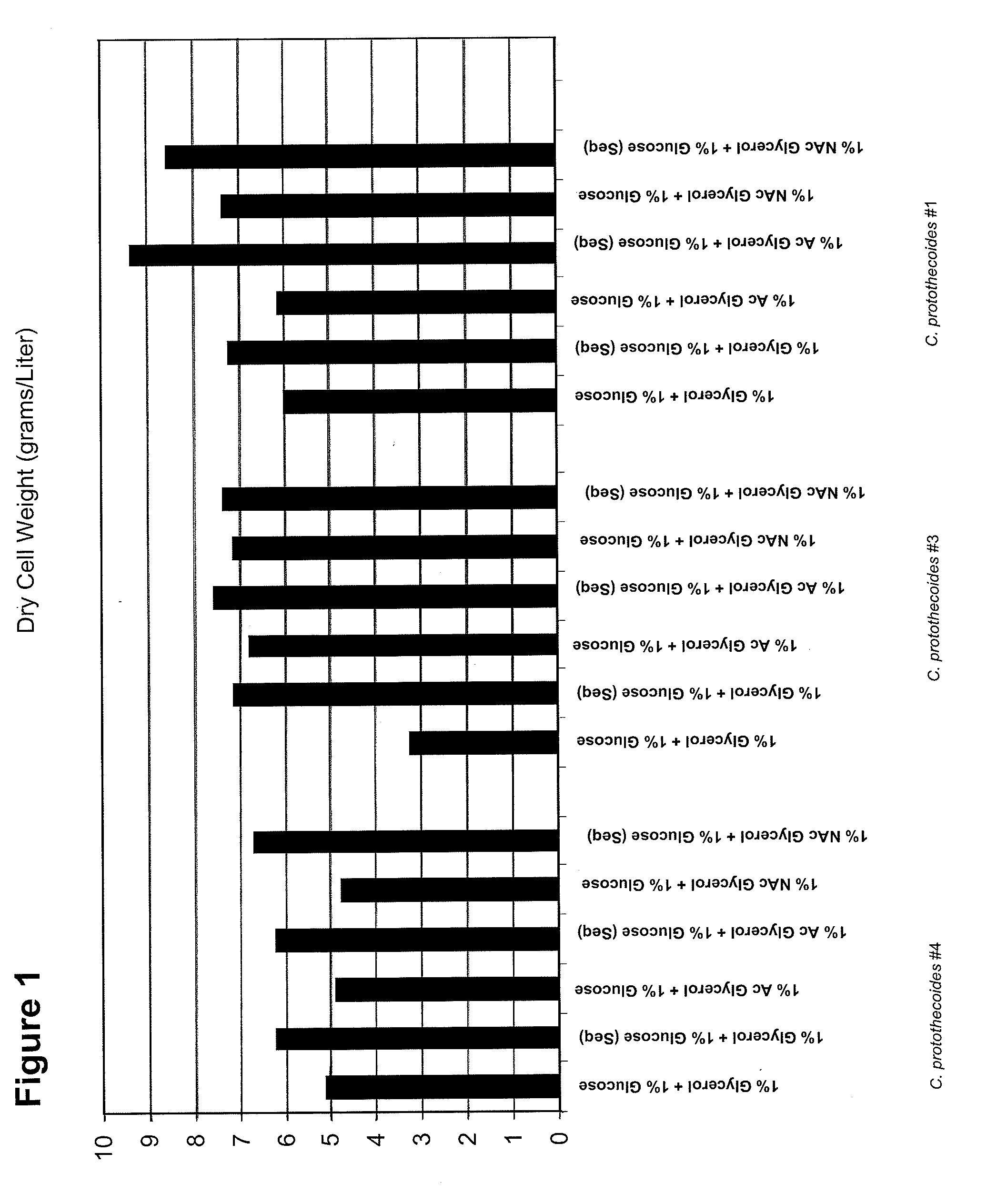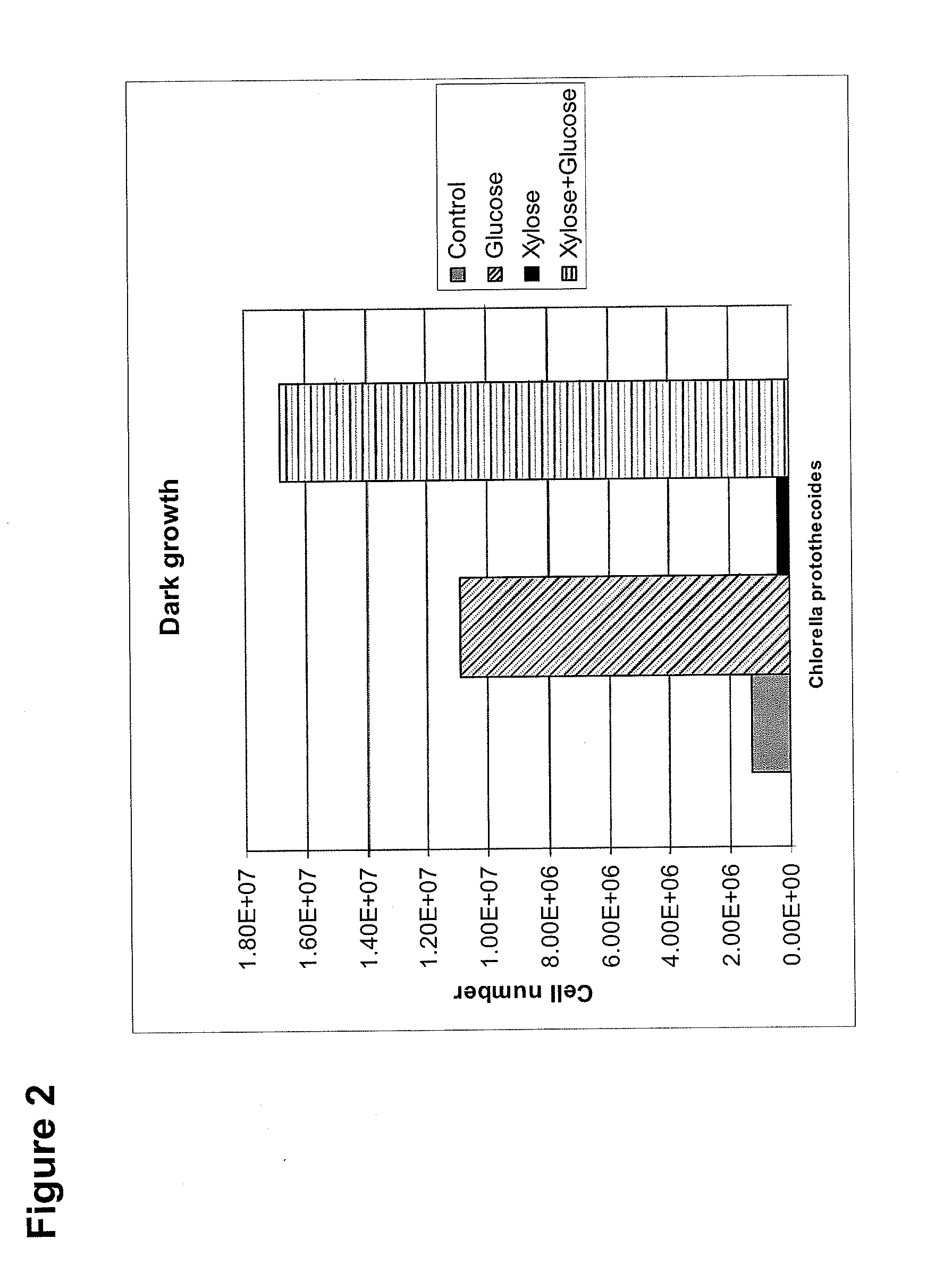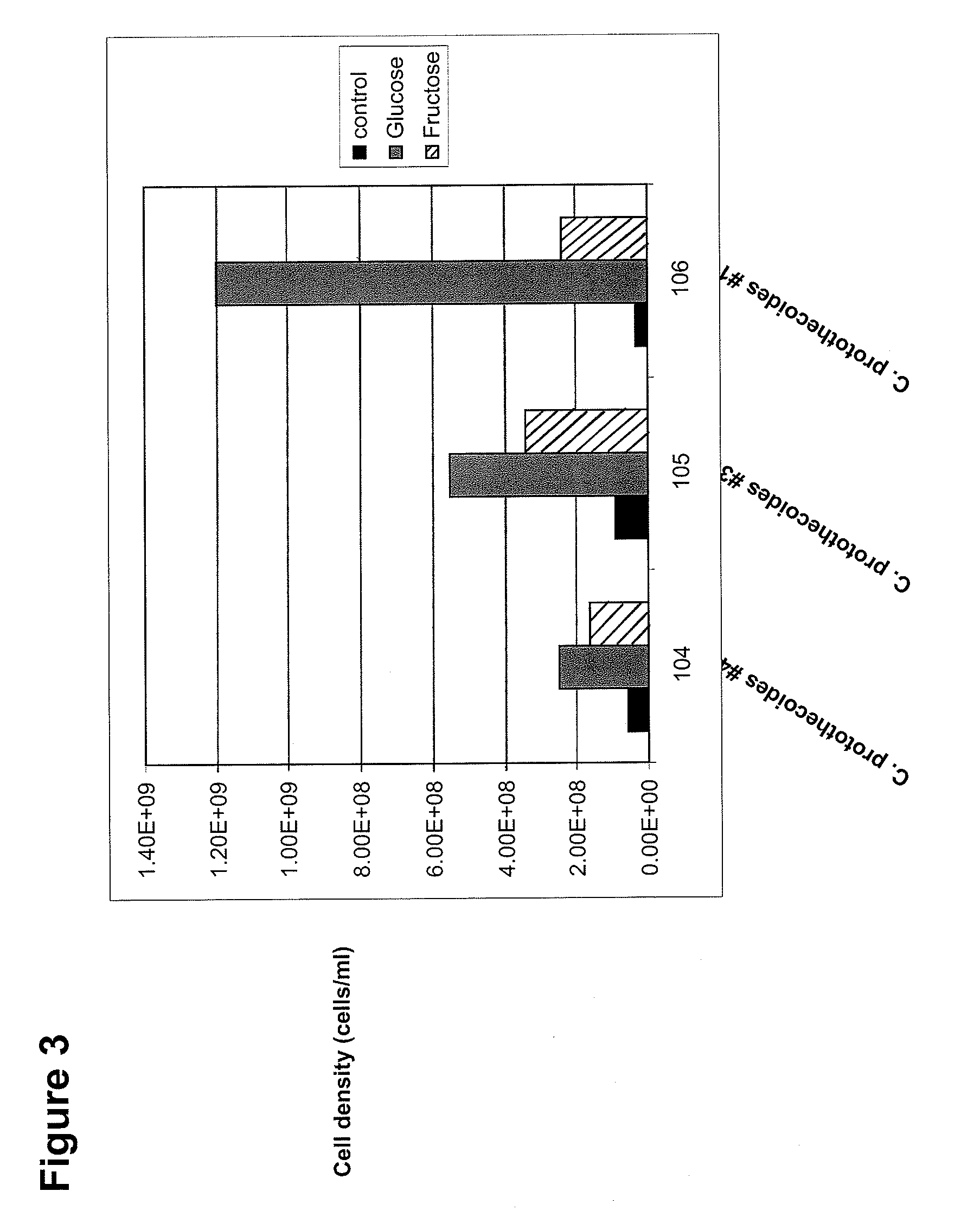Methods of treating impaired glucose metabolism via administration of algal biomass
a technology of algal biomass and glucose metabolism, which is applied in the field of medicine, aquaculture, fermentation, and genetic engineering, can solve the problems of increasing the risk of cardiovascular disease and death, and achieve the effect of lowering the percentage fat of total body weight and the mean plasma glucose concentration
- Summary
- Abstract
- Description
- Claims
- Application Information
AI Technical Summary
Benefits of technology
Problems solved by technology
Method used
Image
Examples
example 1
[0199]Chlorella protothecoides strains from the University of Texas culture collection were tested for growth on glycerol and glucose (UTEX 31, 249, 250, 264). Each strain was inoculated from solid media into 25 ml liquid base media (2 g / L yeast extract, 2.94 mM NaNO3, 0.17 mM CaCl2.2H2O, 0.3 mM MgSO4.7H2O, 0.4 mM K2HPO4, 1.28 mM KH2PO4, 0.43 mM NaCl) and grown shaking at 27° C. for 72 hours under a light intensity of 75 μEm−2s−1. These cultures were used to inoculate each strain to a final density of 1×105 cells per ml into 24-well plates containing 2 ml of (a) base media only; (b) base media plus 0.1% glucose; and (c) base media plus 0.5% reagent grade glycerol (EM Science, catalog #GX0185-6). Plates were placed in the dark and grown for 72 hours shaking at 27° C. Samples of each strain grown in the three conditions were diluted 1.9:1 in distilled H2O and absorbance was read at 600 nm in a Molecular Devices SpectraMax 340PC. All strains exhibited growth in the presence of glucose ...
example 2
[0200]Strains and Media: Chlorella protothecoides (STRAIN 250), (STRAIN 249), and (STRAIN 31) were obtained from the Culture Collection of Alga at the University of Texas (Austin, Tex., USA). The stock cultures were maintained on modified Proteose medium. Modified Proteose medium consisted (g / L) of 0.25 g NaNO3, 0.09 g K2HPO4, 0.175 g KH2PO4, 0.025 g CaCl2.2H2O), 0.075 g MgSO4.7H2O and 2 g yeast extract per liter. Glycerol wastes from biodiesel production (acidulated glycerol (AG) and non-acidulated glycerol (NAG)) were obtained from Imperial Western Products (Selma, Calif., USA). “Pure” or “reagent grade” glycerol was from EM Science (a division of Merck KGA), catalog #GX0185-6.
[0201]Experimental design and lipid assay: For each strain, 1 ml of following different media was prepared in 24-well plates.
[0202]1. Proteose+1% pure glycerol+1% glucose
[0203]2. Proteose+1% pure glycerol+1% glucose (added after 72 hr)
[0204]3. Proteose+1% acidulated glycerol+1% glucose
[0205]4. Proteose+1% ac...
example 3
[0209]Strains and Media: Chlorella protothecoides (UTEX 31) was obtained from the Culture Collection of Algae at the University of Texas (Austin, Tex., USA). The stock cultures were maintained on modified Proteose medium (see EXAMPLE 2).
[0210]Experimental design: For each condition, 1 ml of following different media was prepared in 24-well plates.
[0211]4. Proteose
[0212]5. Proteose+0.5% glucose
[0213]6. Proteose+0.5% xylose
[0214]7. Proteose+0.25% glucose+0.25% xylose
[0215]Chlorella protothecoides (UTEX 31) was inoculated to media containing different sugars (glucose, or xylose) to 3×105 cells / ml concentration. The cultures were kept in dark and agitated by orbital shaker from Labnet (Berkshire, UK) at 430 rpm. After 72 hr of growth, cell growth was measured by counting cell numbers of each culture. Results are shown inFIG. 2.
PUM
| Property | Measurement | Unit |
|---|---|---|
| Fraction | aaaaa | aaaaa |
| Fraction | aaaaa | aaaaa |
| Percent by mass | aaaaa | aaaaa |
Abstract
Description
Claims
Application Information
 Login to View More
Login to View More - R&D
- Intellectual Property
- Life Sciences
- Materials
- Tech Scout
- Unparalleled Data Quality
- Higher Quality Content
- 60% Fewer Hallucinations
Browse by: Latest US Patents, China's latest patents, Technical Efficacy Thesaurus, Application Domain, Technology Topic, Popular Technical Reports.
© 2025 PatSnap. All rights reserved.Legal|Privacy policy|Modern Slavery Act Transparency Statement|Sitemap|About US| Contact US: help@patsnap.com



